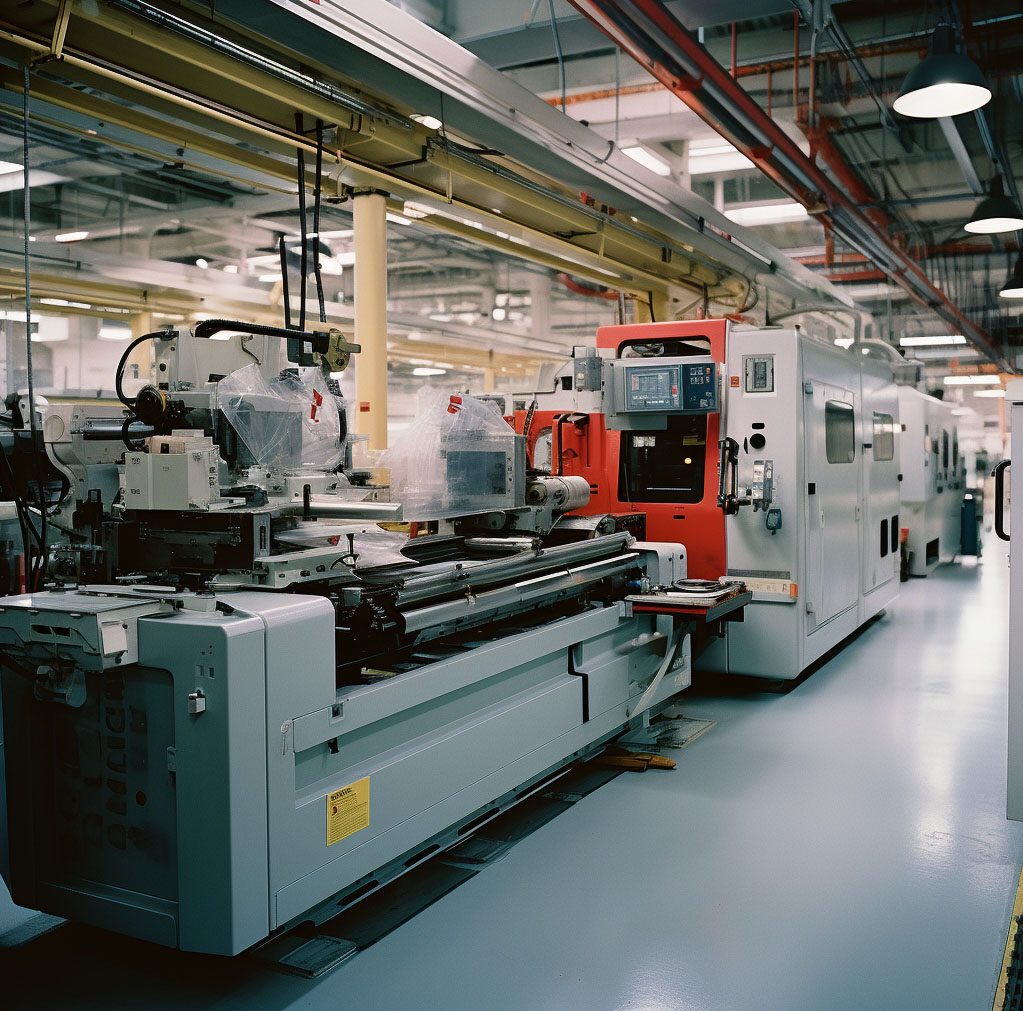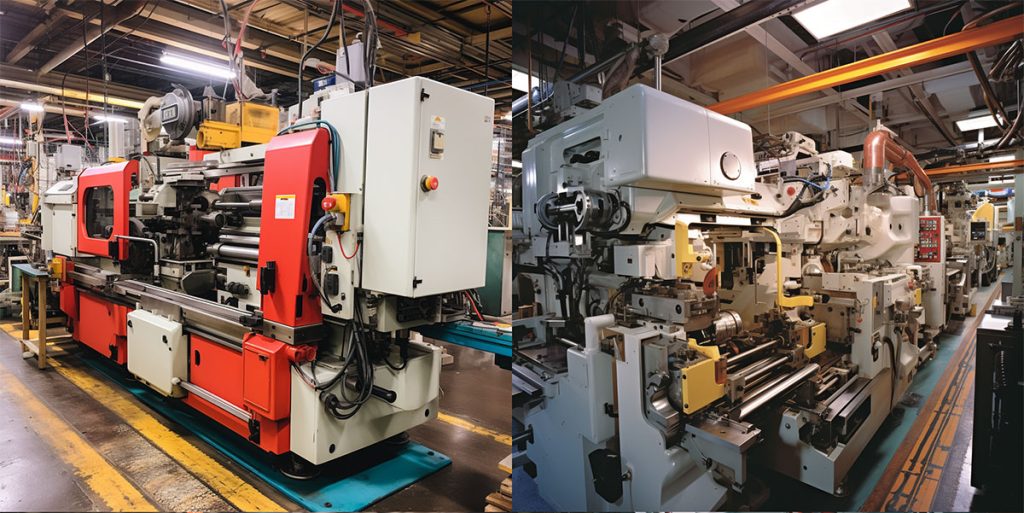Injection molding has been a cornerstone of manufacturing for decades, allowing for the mass production of plastic components with exceptional precision. One of the pivotal companies in this industry is Cincinnati Milacron, a name synonymous with reliability and innovation in plastic molding technology. Among its wide range of machinery, the 1996 Cincinnati Milacron injection molding machine stands out as a noteworthy example, combining advanced features, versatility, and durability. In this blog, we’ll take a detailed look at the key characteristics, applications, and legacy of this iconic piece of equipment.

1. Background of Cincinnati Milacron
Cincinnati Milacron, initially a machine tool company, expanded its portfolio in the mid-20th century by entering the injection molding market. The company became a global leader in producing plastic injection molding machines, known for innovation and building robust machines capable of handling various materials and molding processes. By 1996, Cincinnati Milacron had firmly established itself as a trusted brand for both large-scale manufacturers and small to mid-sized plastic production businesses.
The 1996 Cincinnati Milacron machines represented the pinnacle of their injection molding technology at the time, offering exceptional reliability and efficiency. It marked a turning point where the company integrated cutting-edge features like more sophisticated controls, higher precision, and better overall energy efficiency.

2. Key Features of the 1996 Cincinnati Milacron Injection Molding Machine
The 1996 model year was significant for Cincinnati Milacron’s injection molding line because it introduced advanced features that set these machines apart. Here are some of the key features:
a) Hydraulic System
One of the standout aspects of the 1996 Cincinnati Milacron machines was the advanced hydraulic system. These machines employed a variable-displacement pump that allowed for greater control over the molding process, reducing energy consumption and improving cycle times. The hydraulics were designed to be highly durable, ensuring that the machines could handle the demands of high-volume production without significant downtime.
b) Clamping Force
These machines were available in a wide range of clamping forces, typically ranging from 300 tons to 2000+ tons, making them suitable for producing a variety of products from small, intricate parts to larger components like automotive panels and appliance housings. The clamping unit was robust and capable of withstanding high injection pressures while maintaining precision.
c) Control Systems
In the mid-90s, Cincinnati Milacron made significant strides in the control systems of their injection molding machines. The 1996 models featured the CAMAC® control system, which allowed for precise adjustments to the molding parameters. This level of control was essential for manufacturers looking to maintain tight tolerances and consistent product quality. The CAMAC system also made it easier to store and recall molding recipes, reducing setup times and ensuring repeatability between production runs.
d) Injection Unit
The injection units on these machines were engineered for both speed and precision. Capable of delivering high injection pressures, they could process a wide range of materials, including thermoplastics, thermosets, and advanced composites. The design minimized material waste and ensured smooth, consistent melt flow into the mold cavity. Moreover, the machines offered flexibility in shot sizes, making them adaptable to various product dimensions.
e) Durability and Maintenance
Cincinnati Milacron was known for building machines that lasted. The 1996 models were no exception, designed with rugged components that could withstand continuous, high-intensity use. Maintenance was also simplified with modular components, making repairs and part replacements easier and less time-consuming. This focus on durability was one of the reasons why many of these machines are still in operation today, nearly three decades later.
3. Applications of the 1996 Cincinnati Milacron Injection Molding Machine
The versatility of the 1996 Cincinnati Milacron injection molding machines made them popular across a wide array of industries. Some common applications included:
a) Automotive Industry
The automotive industry is one of the largest users of injection molding, producing components such as bumpers, dashboards, and various under-the-hood parts. The high clamping forces and precision offered by the 1996 Milacron machines made them ideal for manufacturing these larger, complex components that needed to meet stringent quality standards.
b) Consumer Goods
The 1996 machines were frequently used to produce plastic housings for electronics, kitchen appliances, toys, and other consumer products. The ability to handle intricate designs with repeatability made them valuable for manufacturers aiming for cost-effective, high-quality production.
c) Medical Devices
Medical device manufacturers rely on precise and sterile components. Cincinnati Milacron machines, with their high degree of precision and control, were often employed in the production of medical parts such as syringes, surgical instruments, and diagnostic devices.
d) Packaging
From producing plastic caps and closures to containers and packaging materials, the 1996 Cincinnati Milacron machines were heavily used in the packaging industry. Their speed, combined with the ability to run multiple cavity molds, allowed for high-volume production that was critical in this sector.
4. Energy Efficiency and Environmental Considerations
In the mid-90s, energy efficiency was becoming an increasingly important factor in industrial equipment, and Cincinnati Milacron was ahead of the curve with its 1996 injection molding machines. The variable-displacement pumps and optimized hydraulic systems reduced energy consumption by adjusting power output to match the specific needs of the molding process. This not only reduced operational costs for manufacturers but also minimized the environmental footprint of plastic production.
Moreover, the precision control of material flow helped reduce waste, contributing to more sustainable production practices. With plastic waste being a growing concern, machines that could reduce scrap and operate more efficiently were highly valued by manufacturers focused on sustainability.
5. Legacy and Continuing Use
One of the most impressive aspects of the 1996 Cincinnati Milacron injection molding machines is their longevity. Many of these machines are still in operation today, a testament to their durability and robust design. While newer models may offer more advanced features, such as electric-driven systems or further refinements in control interfaces, the 1996 machines remain competitive due to their solid construction and adaptability.
They are often found on the secondary market, where manufacturers looking for cost-effective equipment can acquire a reliable machine without the hefty price tag of a new model. Refurbished units are particularly attractive to smaller businesses or those entering the plastic molding industry.
6. Conclusion
The 1996 Cincinnati Milacron injection molding machines remain a landmark in the history of plastic molding technology. Their advanced hydraulic systems, precise control mechanisms, and robust construction made them a versatile and reliable choice for manufacturers across various industries. These machines not only helped companies increase efficiency and reduce production costs but also laid the foundation for future innovations in the field of injection molding.
For those seeking durable and adaptable equipment, the 1996 Cincinnati Milacron injection molding machine continues to offer value nearly 30 years after its debut. Whether in automotive, consumer goods, or medical device manufacturing, this machine exemplifies the strength and innovation of Cincinnati Milacron’s legacy in the plastics industry.





